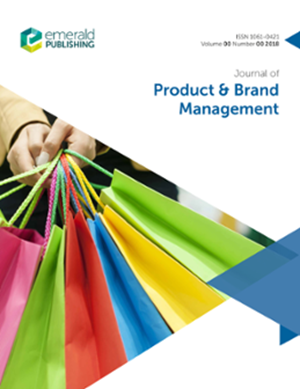Assessing levers of guilt in luxury consumption: an international perspective
IF 5.2
2区 管理学
Q1 BUSINESS
引用次数: 7
Abstract
Purpose For as long as luxury has existed, it has been criticized, by philosophers and moralists, who condemn self-indulgence, hedonism and vanity. Yet these concerns have not prevented the remarkable expansion of the luxury sector, evidence that most buyers revel in unashamed luxury. Modern economists point out the link between the development of the luxury market and the growth of social inequality. This study aims to assess how much guilt consumers feel during luxury purchases and identify its levers. Design/methodology/approach Based on 3,162 real luxury buyers from 6 countries, both Asian and western, emerging and mature luxury markets, a partial least squares-structural equation models (PLS-SEM) analysis assesses the level of guilt experienced during luxury purchases and identifies which drivers most impact guilt. Findings This study assesses the presence of a little guilt among a significant portion of luxury buyers across countries. Two countries present extreme scores: the USA (55.6%) and Japan (32%). Overall, the main driver of guilt is that luxury makes economic inequality highly visible; interestingly the pursuit of hedonism reduces the feelings of guilt. Research limitations/implications These findings have notable implications for luxury companies as the long-term success of this sector would be questionable if it attracts social criticism and induces distressing feelings among clients. Practical implications Luxury brands need to implement guilt reducing communication strategies. Social implications The luxury sector as a whole should redefine its purpose and mission. Originality/value This level of guilt experienced during purchases rarely has been investigated in prior luxury research. Yet luxury addresses larger targets, from the happy few to the happy many. Thanks to PLS-SEM modelization, the same hierarchy of guilt driving factors is revealed across countries.评估奢侈品消费中的负罪感杠杆:一个国际视角
目的只要奢侈存在,它就一直受到哲学家和道德家的批评,他们谴责自我放纵、享乐主义和虚荣。然而,这些担忧并没有阻止奢侈品行业的显著扩张,这证明大多数买家都热衷于厚颜无耻的奢侈品。现代经济学家指出了奢侈品市场的发展与社会不平等加剧之间的联系。这项研究旨在评估消费者在购买奢侈品时的负罪感,并确定其杠杆。设计/方法/方法基于来自亚洲和西方6个国家、新兴和成熟奢侈品市场的3162名真实奢侈品买家,偏最小二乘结构方程模型(PLS-SEM)分析评估了奢侈品购买过程中的内疚程度,并确定了哪些驱动因素对内疚感的影响最大。调查结果这项研究评估了各国相当一部分奢侈品买家是否存在一点内疚感。有两个国家得分最高:美国(55.6%)和日本(32%)。总的来说,罪恶感的主要驱动因素是奢侈品使经济不平等现象非常明显;有趣的是,追求享乐主义减少了罪恶感。研究局限性/影响这些发现对奢侈品公司有着显著的影响,因为如果这一行业受到社会批评并在客户中引发痛苦情绪,那么它的长期成功将是值得怀疑的。实际含义奢侈品牌需要实施减少负罪感的沟通策略。社会影响奢侈品行业作为一个整体应该重新定义其目的和使命。独创性/价值在之前的奢侈品研究中,很少对购买过程中的内疚程度进行调查。然而,奢侈满足了更大的目标,从少数幸福到多数幸福。得益于PLS-SEM模型化,不同国家的内疚驱动因素呈现出相同的层次结构。
本文章由计算机程序翻译,如有差异,请以英文原文为准。
求助全文
约1分钟内获得全文
求助全文
来源期刊

Journal of Product and Brand Management
Multiple-
CiteScore
10.90
自引率
19.60%
发文量
59
期刊介绍:
Branding has evolved and organizations are facing a lot of new challenges when managing their brand reputations, an activity that has become strategic and interdisciplinary. The Journal of Product and Brand Management (JPBM) advances the theoretical and managerial knowledge of products and brands. Manuscripts may either report results based on rigorously analysed qualitative/quantitative data or be purely conceptual. All manuscripts must offer significant research findings and insights and offer meaningful implications for the real world. This journal is proudly international and inter-disciplinary. We publish manuscripts which compare international markets and encourage submissions approaching branding and product management from any discipline. We focus on all aspects of branding and product management from development to dilution. This includes areas as broad as person, place or political brands.
 求助内容:
求助内容: 应助结果提醒方式:
应助结果提醒方式:


